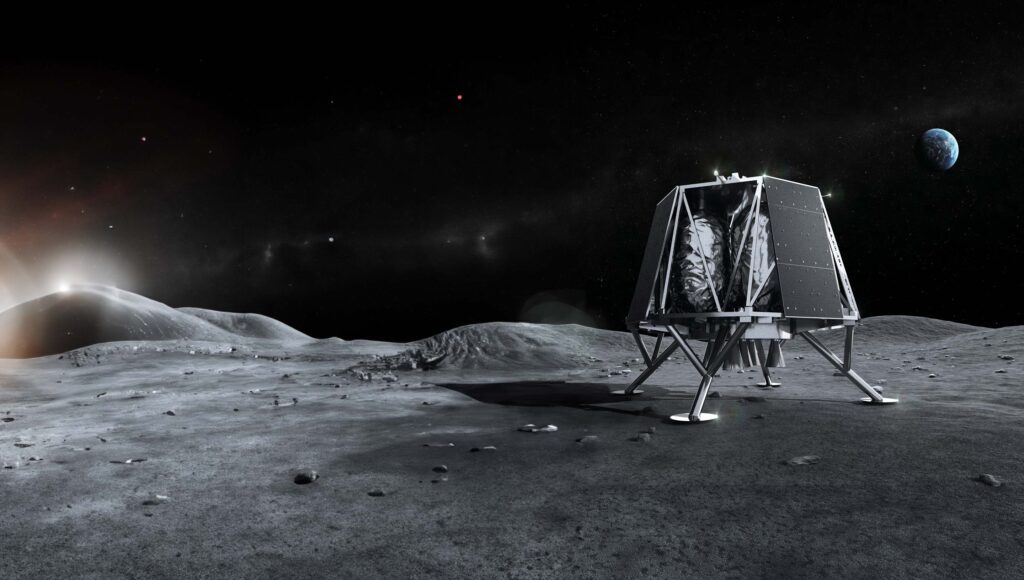A Japanese company developing spacecraft for the moon has garnered $53.5 million through a stock sale to aid in the development of future missions.
The Tokyo-based company, which became publicly traded on the Tokyo Stock Exchange nearly a year ago, announced on March 28 that it completed a sale of 10.25 million shares of stock, raising approximately 8.1 billion yen ($53.5 million). The shares were sold to institutional investors outside of Japan.
Most of the funding — about 7.1 billion yen — will be directed towards various aspects of what the company calls Mission 3, a spacecraft being created by its American subsidiary, ispace U.S., for Draper. That APEX 1.0 spacecraft will embark on a mission in 2026 for NASA’s Commercial Lunar Payload Services (CLPS) program, traveling to the far side of the moon.
The company stated that 1.8 billion yen will be used to cover a portion of the cost of two relay satellites being constructed by Blue Canyon Technologies to manage communications between the farside spacecraft and the Earth. It is allocating 2.1 billion yen for a portion of the mission’s launch on a SpaceX Falcon 9 rocket, while 3.2 billion yen will be allocated for production of the spacecraft itself. The company will use the remaining 1 billion yen for other working capital.
Mission 3 is one of three missions concurrently being developed by ispace. The company is finalizing work on Mission 2, a spacecraft called Resilience similar to its HAKUTO-R M1 spacecraft that crashed while attempting to land on the moon last April, and is commencing work on Mission 6, a larger “Series 3” spacecraft scheduled to launch in late 2026. Both Mission 2 and Mission 6 are being developed by ispace in Japan.
Jumpei Nozaki, chief financial officer of ispace, said in a media briefing that the company had 9.7 billion yen of cash on hand as of the end of December. “The current funds of 9.7 billion yen is not sufficient to cover all three missions and additional development funds will be required,” he said. “We have decided to raise funds to enhance our liquidity buffer.”
The company initially filed plans with the Tokyo Stock Exchange to sell more than 16.5 million shares, but later revised the amount down to 10.25 million. Nozaki said the decision came after discussion with the company’s existing investors. “The investors showed concern about the quite high level of potential dilution on their shares,” he said. The original proposal would have increased the number of outstanding shares by more than 20%.
He said the company wanted to ensure good relationships with its investors as it looks ahead to the long term. “After careful consideration, we have changed to reduce our dilution level.”
He added that the company offered the shares solely to institutional investors outside of Japan. That was intended to diversify the company’s investors and improve liquidity of those shares, “and ultimately to build a stronger shareholder base that will support our company’s further growth.”
The funds raised by the stock sale will not cover the costs of Mission 3 or the later Mission 6, Nozaki said, noting that the company continues to run at a loss because of high research and development expenses for its ongoing missions. The company reported an operating loss of 3.75 billion yen in the third quarter of fiscal year 2023, which closes at the end of March 2024.
He stated that the company anticipated getting money through pre-selling payload services to customers and obtaining bank loans. The company has $55 million for Mission 3 as its part of the CLPS award to Draper for that mission, and received a grant from the Japanese government valued at 12 billion yen in October 2023 to assist in work on Mission 6.
The company does have enough funding for Mission 2, which is set to launch near the end of the year on a Falcon 9. Takeshi Hakamada, chief executive of ispace, mentioned during the briefing that the lander is currently in the process of being put together, tested, and integrated at the company’s facilities in Japan. Once the overall testing is done, the lander will be sent to the U.S. for launch.
He mentioned that ispace believes it has resolved the issues that led to the crash of its first lander, which it attributed to a software problem during the final descent of the lander to the surface. “We gained valuable insights from Mission 1, especially during the landing phase,” he said, with enhancements to both the lander’s hardware and software.
“We are very determined to land on the moon next time on Mission 2,” Nozaki added.









